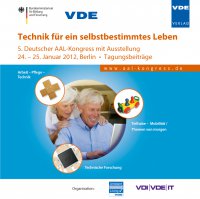Usable user interfaces for persons with memory impairments
Conference: Technik für ein selbstbestimmtes Leben - 5. Deutscher AAL-Kongress
01/24/2011 - 01/25/2012 at Berlin
Proceedings: Technik für ein selbstbestimmtes Leben
Pages: 5Language: englishTyp: PDF
Personal VDE Members are entitled to a 10% discount on this title
Authors:
Hellman, Riitta (Karde AS, Oslo, Norway)
Abstract:
Taking active part in the self-serve society is required as long as possible. Information technology can be used to support this. However, little or no familiarity with information technology represents a major barrier. Another serious hindrance is low accessibility of user interfaces, i.e. solutions which fail to follow the principles of healthy and intuitive design. In this paper, we present design principles that can make an AAL self-service technology for elderly accessible. These principles form a set of guidelines that has been applied in the development of the assistive technology Mylife. Mylife aims to support independence for older people with reduced cognitive function by giving them access to simple and intuitive services that are adapted to their individual needs and wishes. Mylife uses services available on the Internet, such as calendar, photo album, music, news and communication, and presents them together on everyday devices with a touch screen. Mylife is flexible and can be gradually modified to follow the user's cognitive development. Caregivers administer the setup, personalisation and content management of the Mylife product via a web-interface. The web-interface allows the caregiver (secondary end-user) to administer the setup of the primary end-users' Mylife device, including personalisation and daily content management.


